The pink ribbon has been corrupted. Corporations, not community, have become the primary promoters of the pink ribbon. Corporations are exploiting our collective generosity and concern for breast cancer patients to make a profit. Many of these companies are not transparent about which breast cancer charities or research, if any, are benefiting from our purchases. Other companies are pinkwashing, claiming to care about breast cancer (often evidenced by placing a pink ribbon on a product) even though their product actually increases a woman’s risk of breast cancer!
– Jeanette Koncikowski– volunteer Community Leader for Change with Breast Cancer Action, and daughter of a former Komen Foundation volunteer who passed away of Breast Cancer in July 2012
I’m sure most of you out there know that October is “Breast Cancer Awareness Month”, the time of year when we see pink shoes on NFL players and pink ropes on WWE rings. It’s the time of the year when millions of Americans “Race for the Cure” and buy pink ribbons. It’s the time of year that multi-billion dollar corporations give their products pink packaging with the promise of donating a percentage of the proceeds to the Komen Foundation or some other organization that states they are looking to find a “cure for breast cancer” or simply just “raise awareness”. Personally, while I believe in the principles of working alleviate the suffering of others and “giving to a good cause”, a simple look into the origins of “Breast Cancer Awareness Month” and the whole “pink” campaign shows that it is founded on neither of those principles.
Breast Cancer Awareness month was initiated in 1985 by a partnership between the American Cancer Society and chemical conglomerate formerly known as Imperial Chemical Industries, currently known as AstraZeneca Pharmaceuticals (fined $375 million in 2009 for defrauding Medicaid systems in Kentucky and Alabama). With billions in revenues, AstraZeneca is among the world’s largest manufacturers of pesticides, plastics, and pharmaceuticals. According to a 1998 article by journalists Peter Montague, Allison Sloan and Tracy Baxter:
Forty-nine percent of (Astra)Zeneca’s 1997 profits came from pesticides and other industrial chemicals, and another 49 percent came from pharmaceutical sales, and the remaining 2 percent came from health care services including 11 cancer treatment centers… Their product tamoxifen citrate (Nolvadex) is the most commonly prescribed breast cancer treatment drug on the market, and accounted for $500 million in 1997 sales. Cancer prevention would clearly conflict with (Astra)Zeneca’s business plan…
Other large corporations have a vested interest in breast cancer as well. General Electric (who designed the faulty nuclear reactors involved in the Fukishima disaster) sells upwards of $100 million annually in mammography machines; DuPont (a major synthetic chemical company also in the GMO business) supplies much of the film used in those machines. These companies aggressively promote mammography screening of women in their 40s, despite the risk of its contributing to breast cancer in that age group. And while biotech giant Monsanto sponsors Breast Cancer Awareness Month’s high profile event, the Race for the Cure, it continues to profit from the production of many known carcinogens.
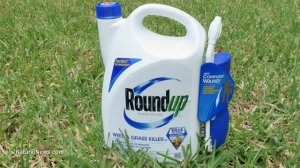 The general public have become increasing aware of the “evils” of Monsanto, who are the face of the GMO business. Glyphosate, the primary ingredient in Monsanto’s “Roundup” pesticide, has recently been labelled as a carcinogen by the World Health Organization. However, what many are less aware of is that Monsanto has had a presence in the pharmaceutical industry. The following was stated on Pfizer’s website:
The general public have become increasing aware of the “evils” of Monsanto, who are the face of the GMO business. Glyphosate, the primary ingredient in Monsanto’s “Roundup” pesticide, has recently been labelled as a carcinogen by the World Health Organization. However, what many are less aware of is that Monsanto has had a presence in the pharmaceutical industry. The following was stated on Pfizer’s website:
In April 2000, Pharmacia & Upjohn completed a merger with Monsanto and Searle creating Pharmacia, a dynamic new competitor in the pharmaceutical industry. This top-tier company’s innovative medicines and other products saved the lives of many and enhanced health and wellness.
In 1999, Pharmacia & Upjohn gained permission to market the breast cancer treatment drug, Ellence in the U.S. The drug was praised as setting a “cancer survival benchmark” at the 27th Annual San Antonio Breast Cancer Symposium. Pharmacia was later purchased by Pfizer, who know owns the rights to Ellence. The point I’m making here is this- it is big chemical/pharmaceutical companies that founded and sponsor this whole “Breast Cancer Awareness Month” as well as the “Race for the Cure”, and one of the ironies here is that pharmaceutical companies have little vested interest in “curing” anything. Pharmaceuticals are in the business of “managed care” and to “cure” a disease would be directly contradictory to their bottom line. Pharmaceutical conglomerates, like other international mega-corporations are first and foremost responsible to their shareholders and their profit bottom line. Any forms of charity and “altruism” are typically more about creating and maintaining a positive “public image” than selfless service or giving to the community. Concern for overall welfare of the consumer is typically an afterthought at best.
Since 1982, the ‘face’ of the “fight” against breast cancer has been the Susan G. Komen Foundation. The Komen Foundation is a multi-million dollar “non-profit” company with assets totaling over $390 million. Better yet, only 20.9% of these funds were reportedly used in the 2009-2010 fiscal year for research “for the cure”. Former Komen CEO Hala Modelmogg made over $550,000 in one year. Much of the money that IS used to ‘race for the cure’ goes to “free” mammograms, which subject women to high doses of ionizing radiation, and can actually cause breast cancer.
In a recent article for the British Medical Journal, Steven Woolshin and Lisa Schwartz, directors of the Center for Medicine and the Media at Dartmouth Medical School in Hanover, New Hampshire, stated that the Komen foundation, “used misleading statistics and deceptive statements about mammography to promote breast cancer awareness and screening,” in its promotional material for the 2011 Breast Cancer Awareness Month. The authors went on to say that Komen willfully ignored “a growing and increasingly accepted body of evidence [showing] that although screening may reduce a woman’s chance of dying from breast cancer by a small amount, it also causes major harms.”
Woolshin and Schwartz went on to illustrate this point:
The Komen advertisement is deceptive in another way: it ignores the harms of screening… Between 20% and 50% of women screened annually for a decade experience at least one false alarm requiring a biopsy. Most importantly, screening results in over-diagnosis. For every life saved by mammography, around two to 10 women are over-diagnosed. Women who are over-diagnosed cannot benefit from unnecessary chemotherapy, radiation, or surgery. All they do experience is harm… Women need much more than marketing slogans about screening, they need — and deserve — the facts. The Komen advertisement campaign failed to provide the facts. Worse, it undermined decision making by misusing statistics to generate false hope about the benefit of mammography screening. That kind of behavior is not very charitable… The benefits and harms [of mammography] are so evenly balanced that the National Breast Cancer Coalition, a major US network of patient and professional organizations, ‘believes there is insufficient evidence to recommend for or against universal mammography in any age group of women.’
 The National Cancer Institute has stated that mammography may cause 75 cases of breast cancer for every 15 it identifies in younger women. A study published in the Journal of the Royal Society of Medicine recently also pointed out that radiating breast mammography was a harmful medical practice that ‘should be abandoned.’
The National Cancer Institute has stated that mammography may cause 75 cases of breast cancer for every 15 it identifies in younger women. A study published in the Journal of the Royal Society of Medicine recently also pointed out that radiating breast mammography was a harmful medical practice that ‘should be abandoned.’
It is worth noting that the Komen foundation owns stock in General Electric (who polluted a 200-mile stretch of the Hudson River with carcinogenic PCBs) as well as AstraZeneca Pharmaceuticals. At the Food and Drug Administration hearings in 1998, the Komen Foundation was the only national breast cancer group to endorse the cancer treatment drug Tamoxifen as a prevention device for healthy but high-risk women, despite vehement opposition by the majority of other breast cancer groups. Its maker is AstraZeneca, which makes educational grants to Komen and has a continually visible presence at the Race for the Cure.
While Tamoxifen is one of the most widely used and arguably successful breast cancer treatments today, it is also classified as a known carcinogen. This is why groups such as the National Women’s Health Network, Breast Cancer Action, and Medical Consumers Union all issued critical statements at the hearing against approving it to prevent breast cancer. These groups testified about the drug’s troubling links to uterine cancer as well as the FDA’s questionable criteria used to define a woman as high-risk.
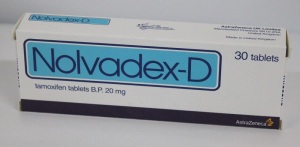 The sad truth is that while the Komen Foundation may have had good intentions in its early years, founded by the sister of a woman who lost her life to breast cancer, Komen and the breast cancer “awareness” movement has by and large lost its way. It has now become just another P.R. marketing firm for big pharma, the mammogram industry and big corporations whose products are creating the cancer Komen is “racing” to cure. Advertisements utilizing the testimonies of breast cancer survivors tug at the heartstrings of consumers, while lining the pockets of sponsors and the “cancer industry”. All the while a human being’s suffering is being exploited on television for a profit potentially without them even realizing it.
The sad truth is that while the Komen Foundation may have had good intentions in its early years, founded by the sister of a woman who lost her life to breast cancer, Komen and the breast cancer “awareness” movement has by and large lost its way. It has now become just another P.R. marketing firm for big pharma, the mammogram industry and big corporations whose products are creating the cancer Komen is “racing” to cure. Advertisements utilizing the testimonies of breast cancer survivors tug at the heartstrings of consumers, while lining the pockets of sponsors and the “cancer industry”. All the while a human being’s suffering is being exploited on television for a profit potentially without them even realizing it.
 These corporations are peddling the processed food, GMOs, and cosmetic products that contain the very hormone-disrupting carcinogens that are known to cause breast cancer in the first place. They then turn around and put a pink label on these products so people will in turn buy more. Companies know that aligning themselves with “breast cancer awareness” will increase their profits and improve the public’s perception of them. It is basic marketing and advertising to want consumers to “feel good” about what they’re purchasing. Feeding off the average person’s desire to help others, corporations will put pink ribbons and pink packaging on their products, knowing that this will compel people to choose their product over that of a competitor.
These corporations are peddling the processed food, GMOs, and cosmetic products that contain the very hormone-disrupting carcinogens that are known to cause breast cancer in the first place. They then turn around and put a pink label on these products so people will in turn buy more. Companies know that aligning themselves with “breast cancer awareness” will increase their profits and improve the public’s perception of them. It is basic marketing and advertising to want consumers to “feel good” about what they’re purchasing. Feeding off the average person’s desire to help others, corporations will put pink ribbons and pink packaging on their products, knowing that this will compel people to choose their product over that of a competitor.
Remember, the “profit first” model that most multi-national corporations are beholden to makes them by their very nature amoral entities. It doesn’t matter how many good men and women work for them, as long as the shareholder-first model is in place, nothing will change. From the perspective of someone who is fighting to end cancer, this is insane. From the perspective of someone who is profiting in multiple ways from cancer, this is brilliant.
Let’s be honest, when you buy “pink”, you have no idea how much if any of that money is actually going to “cancer research”, you take it as an act of faith. This is one of the main reasons I never give to “cancer research”. People wear pink ribbons to promote breast cancer “awareness”. The pink ribbon itself was originally a peach-colored loop made by 68-year old breast cancer survivor Charlotte Haley to spread “awareness”. The awareness was printed on a card that accompanied the ribbons that stated:
The National Cancer Institute annual budget is $1.8 billion, only 5 percent goes for cancer prevention. Help us wake up our legislators and America by wearing this ribbon.
In 1992 Haley was contacted by “Self” magazine who expressed interest in giving her “national attention”, but Haley declined, stating she saw them as “too commercial”. It was at that point the magazine and their major sponsor, cosmetic giant Estee Lauder told Haley they wanted her to relinquish the ribbon concept, and when she would not, they turned her peach ribbon pink. This became the vehicle for Lauder’s corporate philanthropy organization, the Breast Cancer Research Foundations. It should again be noted that many of the chemicals used in Estee Lauder cosmetics are known carcinogens that are absorbed through the skin.
“Awareness” – does anyone really know what that even means anymore? Of course we are “aware” of breast cancer, pretty much everyone in America at the very least knows someone who knows someone who has tangled with or even died from it. We are aware it exists and we are aware that people are suffering and losing their lives. I know, Komen is promoting “awareness” through breast screening using the mammogram machines that General Electric makes and Komen profits from through its stock ownership. But this isn’t the kind of awareness that will really help anyone but those looking to make a profit.
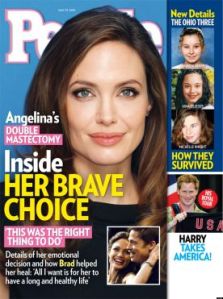 We are fed this line that if you have these specific genes, you are pretty much guaranteed to get breast cancer and there isn’t anything you can do save for maybe mutilating your body. We have celebrities like Angelina Jolie supposedly getting a double-mastectomy (I say “supposedly” because you can never be sure of the reality of ANYTHING that comes out of the Hollywood scene), which essentially acts as marketing for the procedure. Celebrities have been us`ed for marketing since the 1920s, and while I don’t know Angelina Jolie personally, and I’m not trying to be disrespectful, but the fact remains that these are actors and Hollywood and the media lies to the American public on a regular basis. It should also be taken into consideration that the human body is a complex, interrelated network of communicating cells, organs, glands, etc.; not a group of compartmentalized parts. This being said, the trauma of having your breasts or any other body part removed will have impact and consequences throughout your body in ways that may seem totally unrelated.
We are fed this line that if you have these specific genes, you are pretty much guaranteed to get breast cancer and there isn’t anything you can do save for maybe mutilating your body. We have celebrities like Angelina Jolie supposedly getting a double-mastectomy (I say “supposedly” because you can never be sure of the reality of ANYTHING that comes out of the Hollywood scene), which essentially acts as marketing for the procedure. Celebrities have been us`ed for marketing since the 1920s, and while I don’t know Angelina Jolie personally, and I’m not trying to be disrespectful, but the fact remains that these are actors and Hollywood and the media lies to the American public on a regular basis. It should also be taken into consideration that the human body is a complex, interrelated network of communicating cells, organs, glands, etc.; not a group of compartmentalized parts. This being said, the trauma of having your breasts or any other body part removed will have impact and consequences throughout your body in ways that may seem totally unrelated.
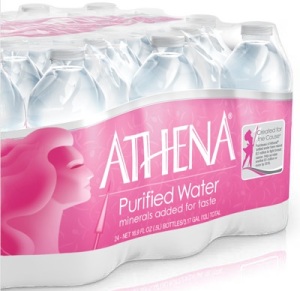 Women are put though lengthy, painful and expensive treatments and many still wind up being killed by the disease. All the while, people fundraise to give pharmaceutical companies money to “research” for a cure that they have no intention of delivering. We have fatalists in the medical science establishment who say we’re cursed by genetics as if it’s always been this way, while ignoring the fact that these cancers have skyrocketed in sync with the increased use of radiation and known carcinogens and hormone disrupting chemicals in our food, air, water, cosmetics, food packaging, drink bottles (like the Bisphenol-A in the Komen pink “Athena” water bottles), medications (hormone therapy, birth control), household cleaning products, shampoos, soaps, fragrances, receipt printing inks, cell-phones, etc.
Women are put though lengthy, painful and expensive treatments and many still wind up being killed by the disease. All the while, people fundraise to give pharmaceutical companies money to “research” for a cure that they have no intention of delivering. We have fatalists in the medical science establishment who say we’re cursed by genetics as if it’s always been this way, while ignoring the fact that these cancers have skyrocketed in sync with the increased use of radiation and known carcinogens and hormone disrupting chemicals in our food, air, water, cosmetics, food packaging, drink bottles (like the Bisphenol-A in the Komen pink “Athena” water bottles), medications (hormone therapy, birth control), household cleaning products, shampoos, soaps, fragrances, receipt printing inks, cell-phones, etc.
What many people aren’t aware of is, and what none of these big “pinkwashers” are talking about is WHY this is happening. The original message on Charlotte Haley’s ribbon spoke of “cancer prevention”. My question is why aren’t any of these “pink” people spreading “awareness”, bringing “awareness” as to why this is such an epidemic and what can be done to prevent it? Unfortunately it appears that the reason this real awareness about breast cancer isn’t being talked about in the mass media is because it is “bad for business”. This is the way it has been for a long time now, and there is little evidence that should cause us to believe the “corporate cancer business” is going to change its tune. Back in 1977 journalist Jim Rosapepe wrote in his article, “Cancer Society Seeks Cure, Neglects Causes”:
Probably the most serious problem with cancer research in this country has been the lack of attention given to banning carcinogenic chemicals. Despite government estimates that 60-70 percent of cancer is caused by environmental factors, the ACS (American Cancer Society) has never pushed a ban on any carcinogenic product.
 The inconvenient truth here is that pretty much every synthetic chemical that we used in our daily life is killing us. But the good news is WE CAN CHANGE THAT. We can take action ourselves RIGHT NOW. We can cut out the sugar and inflammatory garbage from our diet and choose to eat organic and GMO-free, non-processed foods. We can choose to purchase cleaners, cosmetics, fragrances and bath products that use simple organic ingredients rather than a laundry list of 16-letter chemical compounds we can’t pronounce (personally, I make it a rule of thumb not to purchase things with ingredients that I don’t know or can’t say). We can use glass containers instead of plastic. We can filter pesticides and other toxins out of our water. We can tell the cashier to keep the receipt. We don’t need to have our cell-phone on our person at all times. Obviously things like smoking, drinking in excess, drugs (prescription or street) are things to be wary of as they will tend to throw the body out of its natural balance, and cancer if anything is a disease of imbalance.
The inconvenient truth here is that pretty much every synthetic chemical that we used in our daily life is killing us. But the good news is WE CAN CHANGE THAT. We can take action ourselves RIGHT NOW. We can cut out the sugar and inflammatory garbage from our diet and choose to eat organic and GMO-free, non-processed foods. We can choose to purchase cleaners, cosmetics, fragrances and bath products that use simple organic ingredients rather than a laundry list of 16-letter chemical compounds we can’t pronounce (personally, I make it a rule of thumb not to purchase things with ingredients that I don’t know or can’t say). We can use glass containers instead of plastic. We can filter pesticides and other toxins out of our water. We can tell the cashier to keep the receipt. We don’t need to have our cell-phone on our person at all times. Obviously things like smoking, drinking in excess, drugs (prescription or street) are things to be wary of as they will tend to throw the body out of its natural balance, and cancer if anything is a disease of imbalance.
There are also certain organic minerals and vitamins that have also been shown to ward off various forms of cancer. For example there have been studies done, led by the acclaimed Dr. Gerhardt Schrauser, which said you can reduce your risk of breast cancer, depending on the type, by 50-85% by taking 250-500 mcg of Selenium (a trace mineral) each day. Other studies show that most Americans are iodine deficient (as it has been removed from most of the salts, etc.), which causes complications in the thyroid, and other hormonal regulators. Daily supplementation with a good-quality nascent (naturally-derived, and in its most basic form) iodine has been shown to do wonders for the body. Vitamin C has been shown to destroy cancer cells in mega-doses while leaving the healthy cells intact. A bit harder to come by, but a true “cure-all” medicine is Cannabis OIL, which has produced numerous seemingly miraculous success stories of completely eradicating cancer in patients the world over.
It is also well known that the continuous stress we are under in this modern world of the “rat race” is a root causal factor of many diseases. Our mental and psychological state will often dictate the state of our physical health. This is where practices such as meditation and the like can serve as de-stressors. Likewise, the sedentary lifestyle of the average bed to car to desk to car to couch to bed American is also killing us. This is where physical activity and movement come into play for cancer prevention and basic health.
Lastly I will mention the power of prayer. We live in a “mind before matter” universe, and we have the ability to manifest as well as heal with our focused thoughts, heartfelt intentions and the energy those things produce. This is not to say we can use flighty, magical thinking and just wish something to go away. However, if we understand the Law of Prayer and take the right actions in the physical world to assist the bringing about of what we desire and imagine and believe this is possible, we can see true miracles occur.
 Breast cancer is a topic that hits close to home for many people, including the family of people that are very close to me. However, we’ll never find a “cure” if we’re not honest about the cause and don’t take action to negate it. The explosion of cancer of all kinds is a direct result of our modern society and way of life, with its synthetic constructs and complete disconnectedness from the natural rhythms and balances of our body and our planet. Again, this ultimately comes down to us taking back our power over our own health. We need to stop “racing” for others to create a magic pill to sell us and take responsibility to be the cure for ourselves. Knowledge truly is power, and when it comes to cancer, it can be the power over life and death.
Breast cancer is a topic that hits close to home for many people, including the family of people that are very close to me. However, we’ll never find a “cure” if we’re not honest about the cause and don’t take action to negate it. The explosion of cancer of all kinds is a direct result of our modern society and way of life, with its synthetic constructs and complete disconnectedness from the natural rhythms and balances of our body and our planet. Again, this ultimately comes down to us taking back our power over our own health. We need to stop “racing” for others to create a magic pill to sell us and take responsibility to be the cure for ourselves. Knowledge truly is power, and when it comes to cancer, it can be the power over life and death.
As far as charities go, I know I have done a bit of ragging on the likes of Komen and other “corporate charities”, but there are good non-profits out there that are doing real work to help people. First there is The Breast Cancer Fund, who works “to prevent breast cancer by eliminating our exposure to toxic chemicals and radiation linked to the disease” through lobbying, education, activism, etc. Similarly there is Breast Cancer Action whose mission is “to achieve health justice for all women at risk of and living with breast cancer.” These groups both focus on addressing the causes of breast cancer and what can be done about it. Likewise, neither have any sort of major corporate sponsorship nor advertising presence.
Lastly, there is a local non-profit here in Portland called the Children’s Cancer Association. This is a group that works to bring joy and companionship to children suffering from various forms of cancer through volunteers who do art projects with, play music to, read stories to, and even bring in animals to brighten the day of a sick child. While this is not pertinent specifically to breast cancer, per se, I think it illustrates how healing can happen just through putting a smile on someone’s face. It also shows that is through each of us individually taking action; real, meaningful action, that the suffering caused by cancer in all its forms, can be alleviated.
So in closing, I propose taking “Breast Cancer Awareness Month” away from these corporate conglomerates and giving it actual meaning and substance. Let’s bring awareness to the actual CAUSES of breast cancer, as well as the many other cancers being created by the toxins being sold to us. Let’s bring awareness to how we can counteract these things through non-toxic alternatives and an overall healthy lifestyle. Let’s bring awareness to how each one of us has the potential to take action OURSELVES and make real changes in the world by reaching out and spreading knowledge and compassion to others.
Those who have ears to hear should hear. Namaste and God Bless.
Source Article from http://renegadetribune.com/dont-buy-pink-ribbons-rethinking-breast-cancer-awareness-month/
 RSS Feed
RSS Feed















 October 17th, 2015
October 17th, 2015  Awake Goy
Awake Goy 


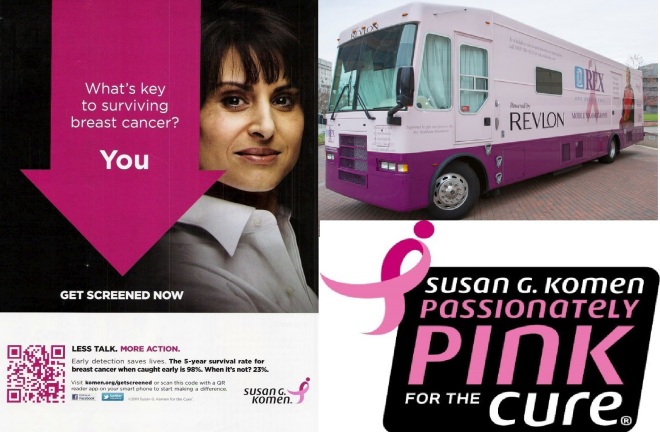


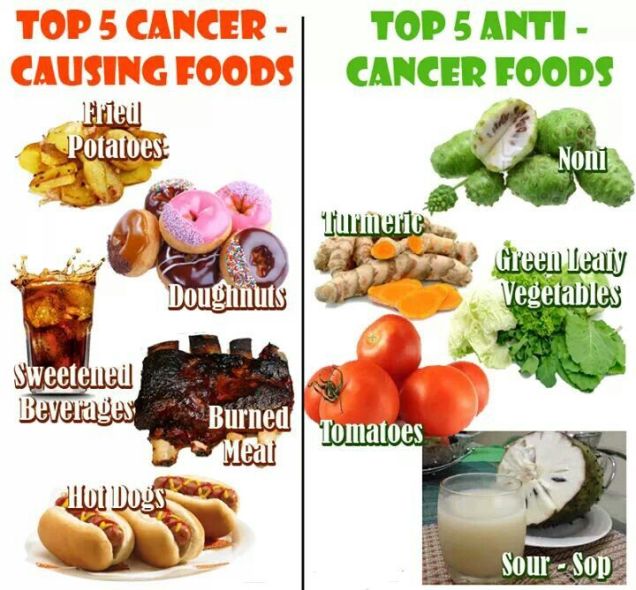
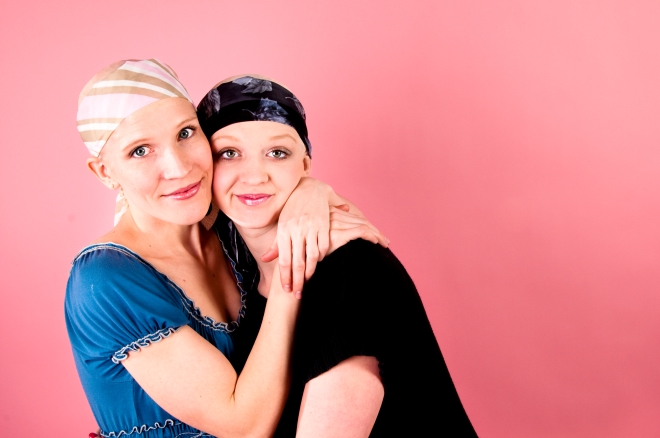
 Posted in
Posted in  Tags:
Tags: 













